Feb. 25 to March 3
After Lee Teng-hui (李登輝) became the first president to publicly apologize for the 228 Incident in 1995, he added that this was just the beginning.
“We need to publicize the truth behind the events, compensate the victims, designate a memorial day, heal our people’s spirits and rebuild their dignity,” he said. “These will all happen in the near future.”
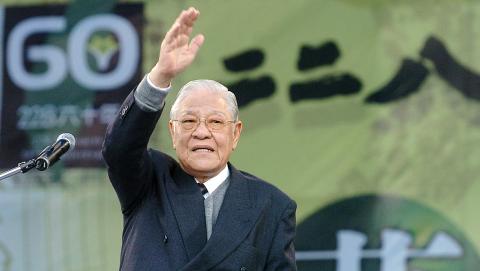
Photo: Liu Hsin-te, Taipei Times
Although activists and opposition politicians had been clamoring for the previous decade for the government to at least acknowledge the 1947 anti-government uprising and subsequent brutal crackdown, it remained a taboo topic well into the 1980s. Between 1948 and 1984, the incident was only mentioned only four times in the major newspapers of Taiwan Shin Sheng Daily News (台灣新生報), United Daily News (聯合報) and China Times (中國時報).
Things started to change after the lifting of martial law in 1987. In 1988, the government made public the original investigative report on the incident conducted in 1947. On Feb. 27, 1990, the Legislative Yuan observed a minute of silence for the victims. The Executive Yuan set up a 228 investigative task force in 1991, releasing a report the subsequent year, and plans were made to set up a monument, memorial park and museum in Taipei.
However, the people still wanted an official apology. Lee declined to do so at first, telling reporters in 1988 that looking into the 228 Incident should be a task for historians, and that people should bury the hatchet and look toward the future instead of the past.
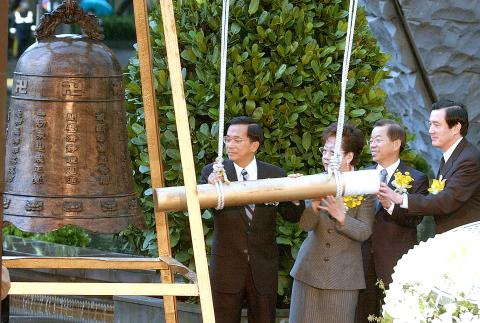
Photo: Liu Hsin-te, Taipei Times
After he finally obliged, things started to move quickly.
COMPENSATION ACT
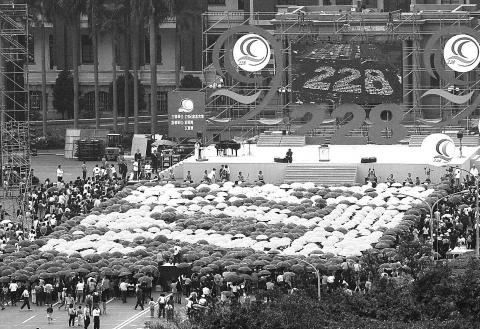
Photo: Chu Yu-ping,Taipei Times
Just over a month after Lee’s historic gesture, the 228 Incident Disposition and Compensation Act (228事件處理及賠償條例) went into effect on Apr. 7, 1995. This act has been modified several times over the years.
The first article describing the purpose of the act has changed little — the first version listed “dealing with compensatory matters, enhancing citizen knowledge on the truth behind the incident, pacifying historical wounds and fostering racial integration,” while the current version adds “implementing historical education and clarifying attribution of responsibility.”
The fourth article established the 228 Peace Memorial Day, fulfilling the wishes of the 228 Peace Day Association (22八和平日促進會), which had been fighting for this goal since it was co-founded by noted democracy activist Deng Nan-jung (鄭南榕) in 1987.
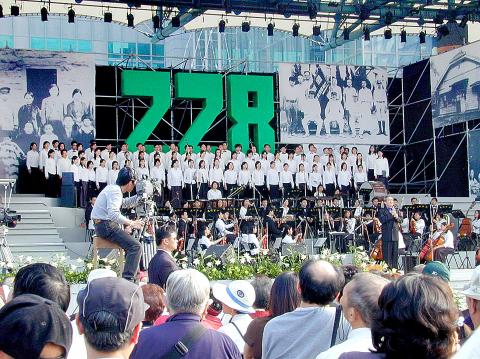
Photo: Tseng Te-feng, Taipei Times
The third article laid the basis for establishing the Memorial Foundation of 228 (228事件紀念基金會), also stipulating that victims or their family members should make up at least one-fourth of the board of directors.
Compensation would be awarded to the family members of victims who had died or disappeared; who had been injured, detained or sentenced; who had suffered loss of property, health or reputation; and any other causes to be determined by the foundation.
As of June last year, the Liberty Times (the Taipei Times’ sister newspaper) reported that 2,312 cases related to the 228 Incident were approved for compensation. This does not include settlements given to White Terror and other Martial Law-era victims.
On the 49th anniversary of the incident in 1996, Taipei New Park (台北新公園) was renamed 228 Peace Memorial Park (228和平紀念公園). The radio station in the park, which was used by angry protestors to broadcast accusations against the government in the aftermath of the incident, opened its doors as the Taipei 228 Memorial Museum (台北22八紀念館) a year later.
The park’s memorial monument was co-designed by architect Cheng Tzu-tsai (鄭自才), who had been involved in the 1970 assassination attempt on former president Chiang Ching-kuo (蔣經國) in New York. Cheng filed the design from jail, as he was serving a one-year sentence for illegally entering Taiwan after decades of exile. While it was unveiled in 1995 and served as the site for Lee’s apology, it took over 30 meetings to finalize the 642-word plaque text, leading to the memorial not being formally dedicated until 1997.
SITES OF REMEMBRANCE
The monument in 228 Peace Memorial Park is actually Taiwan’s sixth such structure, each preceding one with its own story to tell.
The first was built in 1989 to replace a statue of Wu Feng (吳鳳), which had been destroyed by Aboriginal activists a year earlier. For many decades they had resented the government-propagated tale of how Wu sacrificed himself to stop “bloodthirsty” Aboriginal people from headhunting. Aboriginal rights groups had issued an “Indigenous Rights Declaration” in 1987 and the movement was in high gear.
The government obviously did not like the 228 activists’ plans to build a monument on the site, so they moved quickly and installed a peace bell. The activists ended up erecting it in another site in Chiayi. News reports show that the site was vandalized and damaged several times during the construction process. Monument designer Chan San-yuan (詹三原) was jailed (under other pretenses) in 1992, presumably for his role in the incident.
The first government-supported monument is located in Pingtung’s Chungshan Park (中山公園). It was built in 1992, when Pingtung’s mayor was current Premier Su Tseng-chang (蘇貞昌).
Kaohsiung’s Shoushan National Natural Park (壽山國家自然公園) includes the site where negotiations between civilian representatives and government forces broke down. The representatives were arrested or executed, and Kaohsiung became the first area in Taiwan to be suppressed by military force. A memorial was built there in 1993.
Finally, the memorial in Keelung’s Badu (八堵) train station was built in 1994 to commemorate an incident that took place during the government crackdown on the uprising. On Mar. 11, 1947, soldiers shot and killed four or five railway station workers and took away another 13, who were never seen again. The monument was sponsored by the descendants of station master Li Tan-hsiu (李丹修) and his deputy Hsu Chao-tsung (許朝宗).
Today, there are more than 20 monuments for the 228 Incident across Taiwan.
Starting from the incident’s 60th anniversary, the flag on the Presidential Office has flown at half mast every Feb. 28. Prior to that, this only happened when “persons of significance died or major tragedies occurred.”
Taiwan in Time, a column about Taiwan’s history that is published every Sunday, spotlights important or interesting events around the nation that have anniversaries this week.

We lay transfixed under our blankets as the silhouettes of manta rays temporarily eclipsed the moon above us, and flickers of shadow at our feet revealed smaller fish darting in and out of the shelter of the sunken ship. Unwilling to close our eyes against this magnificent spectacle, we continued to watch, oohing and aahing, until the darkness and the exhaustion of the day’s events finally caught up with us and we fell into a deep slumber. Falling asleep under 1.5 million gallons of seawater in relative comfort was undoubtedly the highlight of the weekend, but the rest of the tour

Youngdoung Tenzin is living history of modern Tibet. The Chinese government on Dec. 22 last year sanctioned him along with 19 other Canadians who were associated with the Canada Tibet Committee and the Uighur Rights Advocacy Project. A former political chair of the Canadian Tibetan Association of Ontario and community outreach manager for the Canada Tibet Committee, he is now a lecturer and researcher in Environmental Chemistry at the University of Toronto. “I was born into a nomadic Tibetan family in Tibet,” he says. “I came to India in 1999, when I was 11. I even met [His Holiness] the 14th the Dalai
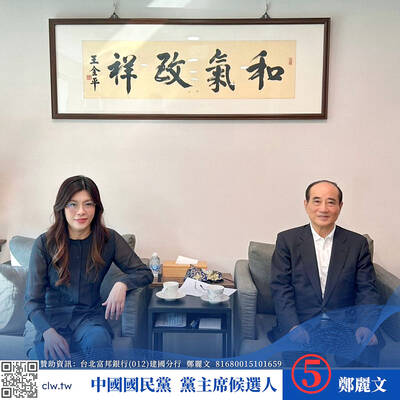
Following the rollercoaster ride of 2025, next year is already shaping up to be dramatic. The ongoing constitutional crises and the nine-in-one local elections are already dominating the landscape. The constitutional crises are the ones to lose sleep over. Though much business is still being conducted, crucial items such as next year’s budget, civil servant pensions and the proposed eight-year NT$1.25 trillion (approx US$40 billion) special defense budget are still being contested. There are, however, two glimmers of hope. One is that the legally contested move by five of the eight grand justices on the Constitutional Court’s ad hoc move

Stepping off the busy through-road at Yongan Market Station, lights flashing, horns honking, I turn down a small side street and into the warm embrace of my favorite hole-in-the-wall gem, the Hoi An Banh Mi shop (越南會安麵包), red flags and yellow lanterns waving outside. “Little sister, we were wondering where you’ve been, we haven’t seen you in ages!” the owners call out with a smile. It’s been seven days. The restaurant is run by Huang Jin-chuan (黃錦泉), who is married to a local, and her little sister Eva, who helps out on weekends, having also moved to New Taipei